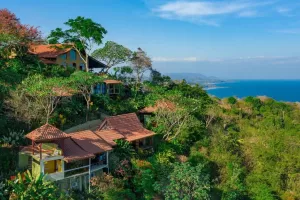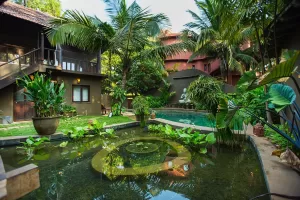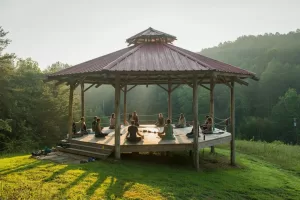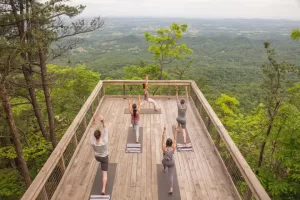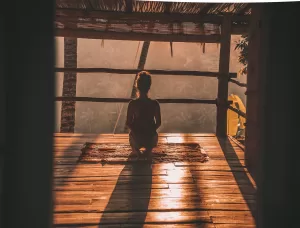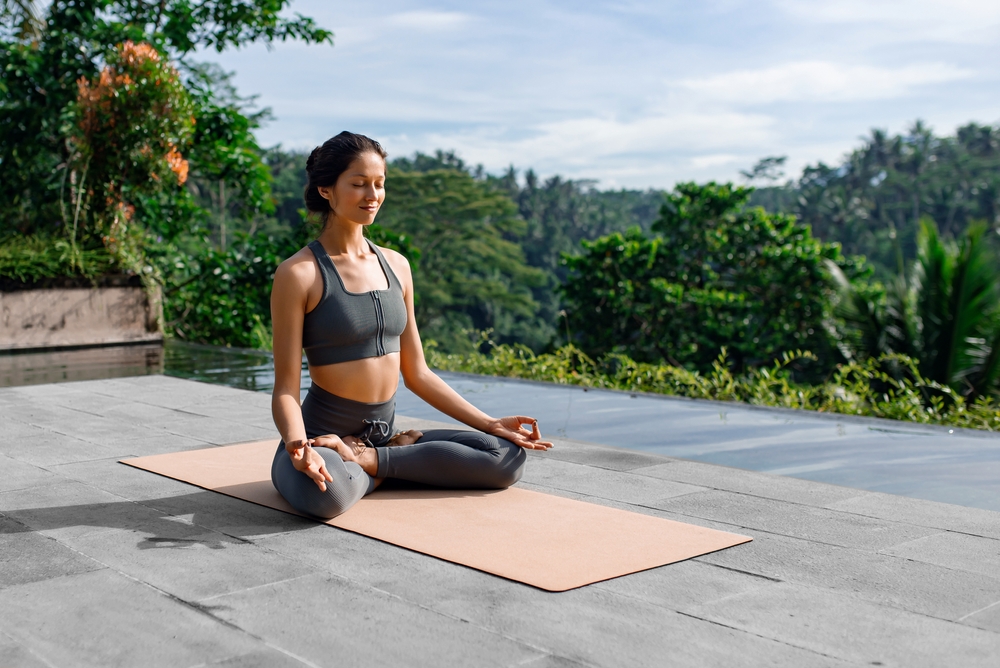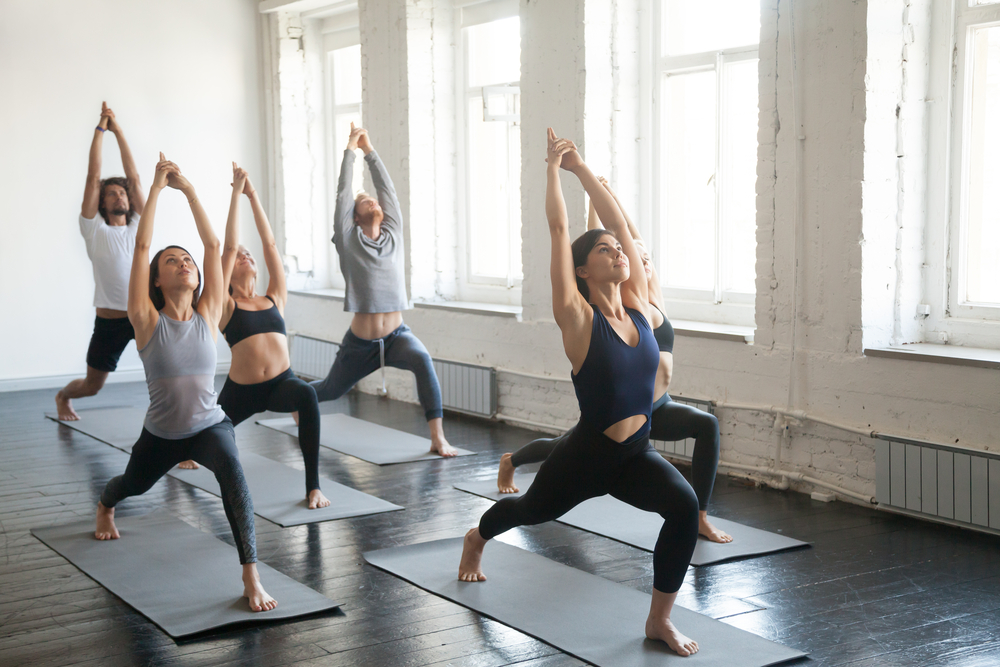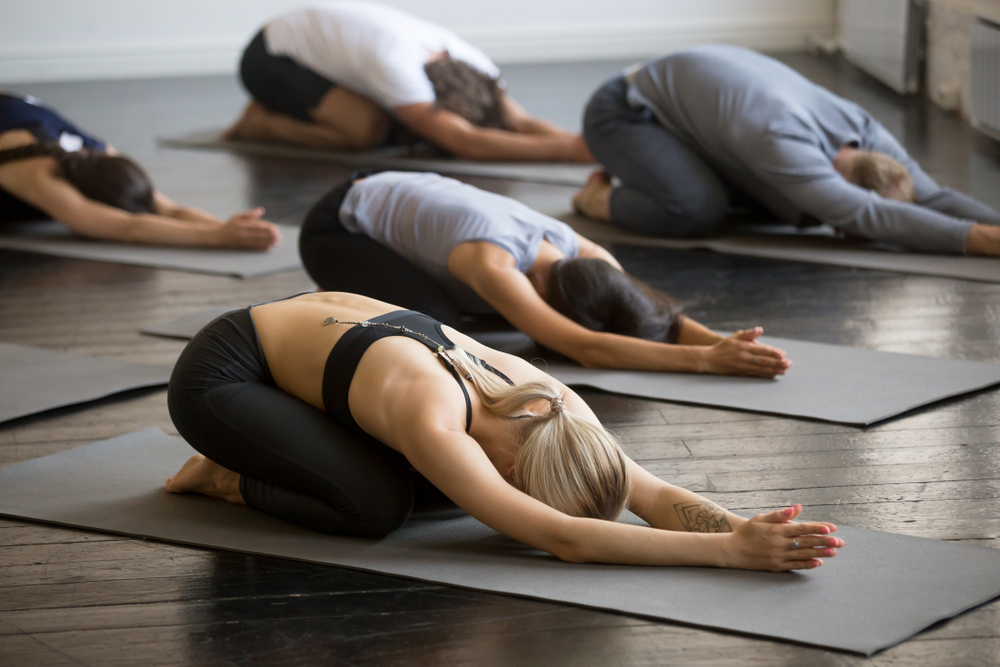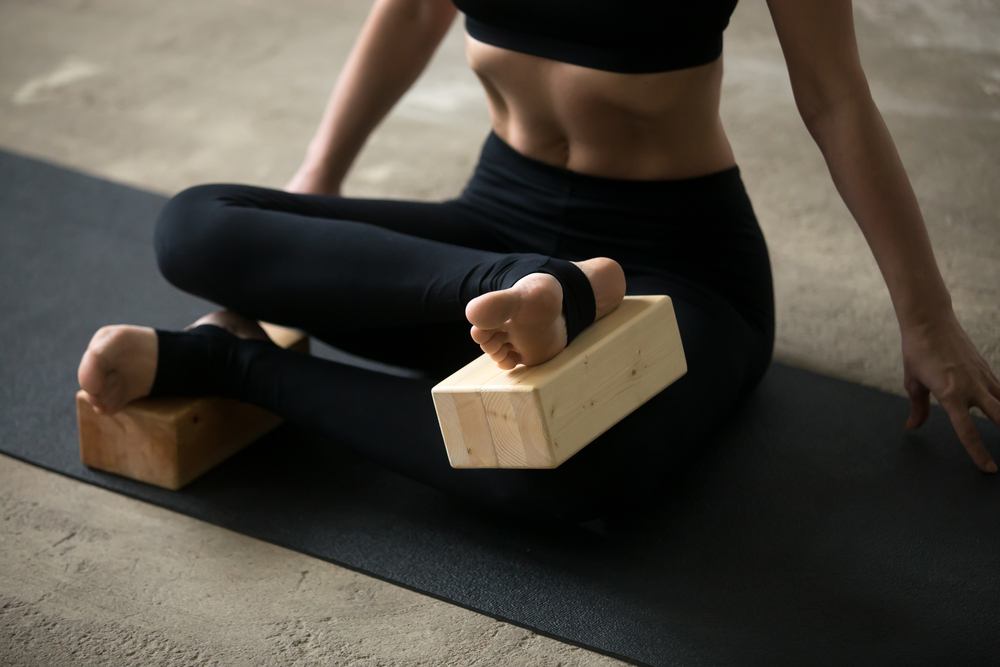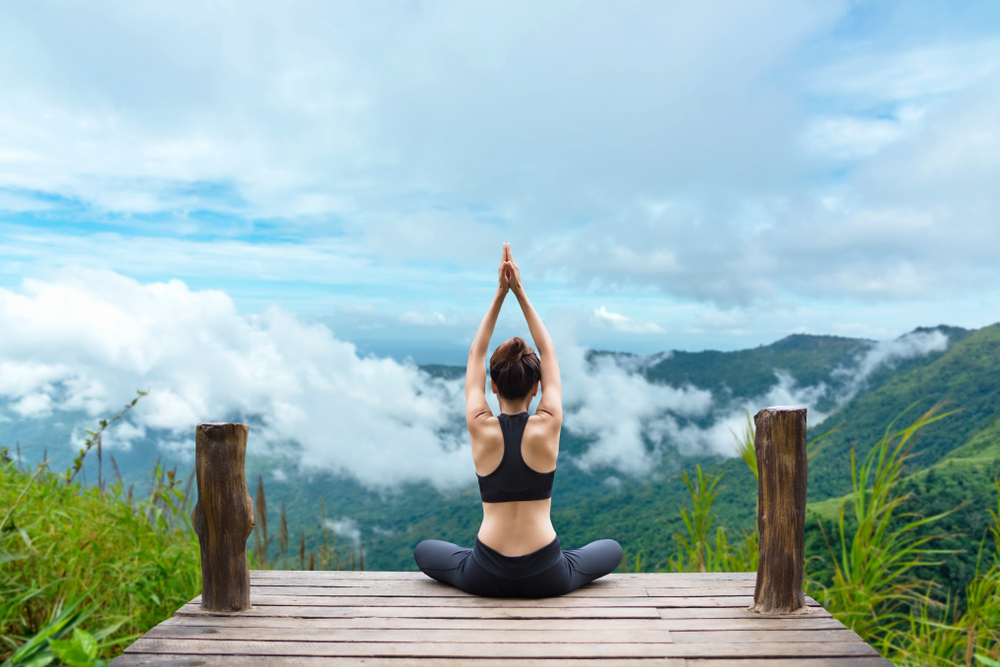In the quiet of the night or the brightness of day, creatures of all kinds give in to sleep. Mammals curl up in nests and burrows, birds tuck their heads beneath their wings, fish slow their movements in the depths, and even some invertebrates slip into a state of rest. People, too, surrender to sleep and, in fact, spend a third of their lives in its grasp. And while sleep is universal, we have been trying to make sense of it for thousands of years. Thinkers like the ancient Greek physician Alcmaeon believed that sleep came when blood ceased to circulate from the heart to the brain. Aristotle, in turn, saw it as a way to restore the body’s delicate balance of heat and moisture. In their time, such theories held weight.
Today, our quest for knowledge delves deeper, spanning biology, neuroscience, and evolutionary theory. Yet, the essence of our curiosity remains: How did sleep evolve, why do its practices vary across cultures and epochs, why do we sleep, and what happens when we do? Gaining even a glimpse into the answers to these questions can deepen our understanding of our nightly journey into rest.
Evolution of Sleep
Sleep, when considered from a functional viewpoint, might appear disadvantageous. An organism that could remain awake continuously would be constantly active and better able to compete for vital resources. Additionally, this uninterrupted alertness could improve predator detection and evasion which might increase survival rates. The absence of sleep would also extend opportunities for social interaction and mating which could boost reproductive success. Moreover, more time awake could lead to greater learning experiences and help with skill development and quicker adaptation.
So, why do we sleep from evolutionary perspective? There is extensive research on this topic, broadly categorized into studies that examine proximate causes, focusing on immediate processes, and ultimate causes which provide evolutionary explanations. Proximate causes focus on the physiological, genetic, and biochemical processes that regulate sleep. For example, these theories investigate functions of sleep such as reducing the accumulation of adenosine and other metabolites in the brain. These are the focus of much of current research. Ultimate causes of sleep, conversely, provide explanations based on evolutionary benefits like boosting immune response, consolidating what we have learned while awake, facilitating dreaming, and conserving energy.
Conserving energy, for example, allows organisms to survive longer periods in environments where food resources are scarce or unpredictable. An enhanced immune response, in turn, reduces the likelihood of infections and increases the chances of survival. Additionally, consolidating what we have learned allows organisms to learn from past experiences such as identifying safe food sources or recognizing predators which directly impacts survival. Dreaming also offers an evolutionary advantage as it enables the simulation of various scenarios. This promotes creative problem-solving that can be applied in real-life situations.
Indeed, all these explanations appear convincing initially but they falter upon close examination. Take energy conservation, for instance—it is not a universal benefit of sleep. While it is clear that sleep lowers the metabolic rate in terrestrial mammals and birds, many aquatic creatures such as sharks and dolphins exhibit sleep-like states without experiencing the same degree of metabolic slowdown. Similarly, while the immune-boosting role of sleep appears significant in mammals and birds, it is less pronounced in certain species of insects and marine organisms. For example, insects such as ants and bees may rely more on organized group behaviors like maintaining clean nests or removing sick members to prevent disease spread, rather than on immune enhancements facilitated by sleep. In contrast, marine organisms like jellyfish use passive immune defenses such as mucus production to trap and neutralize pathogens, and these are not influenced by sleep cycles.
Furthermore, if sleep is necessary for learning, why would it occur in less complex entities like plants and unicellular organisms? Similarly, while the function of dreaming may be important among people, broader primates, or even all mammalian species, suggesting that it applies to creatures like slugs and ferns stretches credibility.
As these functions of sleep are not universally applicable and hence do not fully explain its evolutionary persistence, researchers have examined the distinction between day and night and how this cycle made sleep an adaptive trait.
As organisms adapted exclusively to daytime or nighttime environments, they tended to develop specialized functions and structures suited to those conditions. The challenge of evolving to thrive in both environments simultaneously could lead to compromises where an organism might not optimally fit into either setting. Continuous wakefulness across day and night would require adaptations to both light and dark conditions and the diverse species that inhabit each which would limit the effectiveness in any single environment.
Given that the day/night cycle predates life on Earth, it would be embedded in the biology of all species except for those isolated from these cycles like deep-sea creatures, cave-dwelling species, or microorganisms residing within other organisms. Therefore, adapting to either a diurnal or nocturnal environment is likely deeply encoded in our DNA, evidenced by the presence of sleep-wake cycles in all living beings.
Sleeping Patterns across History and Societies
Throughout history and across various cultures, sleep practices have varied. In feudal Japan, for example, samurai were required to wake up multiple times during the night to check their surroundings, especially when stationed at a camp or during times of war. For common people, however, the cultural expectations around sleep were more relaxed. There was no stigma associated with a tired craftsman sleeping on his mat or a boatman napping by his ferry post while waiting for passengers. In Japan, this practical approach to sleep prevailed: sleep wherever and whenever possible, as life allows.
In pre-industrial Scandinavia’s far north where winter nights were long, people often overslept to pass the time. During short summer nights, they slept less and made the most of every hour of daylight for work and leisure. When fatigue set in from long workdays and short nights, people would compensate with brief naps during the day or catch up on rest on cloudy and rainy days.
In Medieval Western and Central Europe, in contrast, segmented night sleep known as the watch was common. People would go to bed between 9 pm and 10 pm and wake up a few hours later. This period of nighttime wakefulness, lasting from around 11:00 pm to about 1:00 am, was used to tend the hearth, use the toilet, breastfeed infants, or check on farm animals. The watch also served as a time for religious activities, with prayers needing to be completed. For families, this was a chance to talk and connect, activities that daytime busyness often precluded. This time also allowed for intimate moments between husbands and wives and children resulting from these private encounters.
By the early 19th century, Europe had largely moved away from the two-sleep system. This change came with the Industrial Revolution which reshaped economic structures and work practices. Factories needed everyone to work at the same time so sleep schedules got tighter to accommodate the new work hours and staying awake at night became unfeasible.
The Role of Sleep across Life Stages
After we are born, we sleep quite a bit and it is for a good reason. By sleeping between 12 to 16 hours each day, our bodies are able to produce more growth hormone which is mainly synthesized during rest periods. This intense production of GH results in significant bone growth as this hormone is tasked with stimulating bone formation. As GH also promotes protein synthesis in the muscle tissues, large amounts of it lead to intense muscle development. Lastly, heightened GH levels due to long sleeping hours support more intense brain development as this hormone helps build complex neural networks.
In middle childhood, ages 6 to 12, we typically sleep 9 to 12 hours a day. During this period, when we sleep, the brain strengthens connections for developing new skills, such as understanding complex stories, while pruning away those no longer needed like early academic skills. This is known as neuroplasticity. While it is a lifelong process, its impact is particularly pronounced during middle childhood. During these years, children are adapting to increasingly complex academic subjects and social environments. They must process more information, solve more difficult problems, and interact in more nuanced social situations which requires them to learn at an accelerated pace. Heightened neural plasticity enables their brains to quickly and efficiently create pathways for new, more advanced skills and modify those that support previously learned abilities.
For teenagers, the optimal amount of sleep is 8 to 10 hours per night, with many experts recommending about 9 hours. During these years, the prefrontal cortex matures which improves capabilities in decision-making, planning, and problem-solving. This allows teenagers to weigh consequences when making decisions, anticipate scenarios and outcomes when planning, and devise strategies when solving problems. Sleep plays a key role in refining these abilities because it is during rest that the brain strengthens the neural connections associated with these cognitive tasks.
Additionally, during this period, adolescents encounter a wider range of social dynamics. Their social circles expand, and they are faced with a greater number of interactions, each distinct due to the different personalities involved. As adolescents interact more, their ability to interpret feedback from others improves which allows them to incorporate what they find beneficial and disregard what they deem irrelevant. This helps develop a more stable self-identity that is more aligned with their personal values and beliefs and less influenced by external pressure and superficial societal expectations.
Sleep plays an important role in this developmental process as when at rest, the brain processes the day’s social experiences. This helps strengthen the neural pathways involved in the cognitive understanding of social cues which enables teenagers to navigate their interpersonal environments more effectively.
As adolescents transition into adulthood, they generally require 7 to 9 hours of sleep per night. During this stage of life, the role of sleep shifts from growth and developmental refinement to maintaining peak cognitive efficiency. When at rest, the brain filters and organizes daily information which allows it to retain only knowledge essential for work, personal responsibilities, and lifelong learning.
With advancing age, people typically need 7 to 8 hours of sleep per night, although changes in sleep architecture like lighter sleep and more frequent awakenings reduce the efficiency of rest. Despite these changes, sleep remains essential for seniors as it helps mitigate the progression of cognitive decline and manage age-related physiological changes. Among these, sleep facilitates the clearing of metabolic waste harmful to brain neurons which helps reduce neurodegeneration. Waste such as beta-amyloid and tau proteins, if left uncleared, forms plaques and tangles that disrupt communication between neurons and contribute to the onset and progression of Alzheimer’s disease. The accumulation of alpha-synuclein, in turn, leads to the formation of toxic clumps which promote neuronal dysfunction and death in Parkinson’s disease and Lewy body dementia.
Additionally, in older adults, sleep becomes important for managing age-related challenges. During night sleep, for example, parathyroid hormone levels are higher, and this sends a stronger signal to the kidneys to maximize calcium conservation instead of excreting it. Without this sleep-associated mechanism, calcium loss would increase over time and contribute to bone weakening and worsening of conditions such as osteoporosis and osteopenia which are common among seniors.
What Happens When We Sleep?
At rest, our body cycles through two distinct types of sleep: non-REM and REM. Non-REM sleep is marked by slowed muscle activity, heart rate, and breathing, alongside slow brain waves and infrequent dreaming. This phase primarily serves to restore the body. In contrast, REM sleep features rapid eye movements, an active cortex, and vivid dreams. As this stage is characterized by dreaming, it is thought to support cognitive functions like learning and memory, alongside emotional regulation. Because dreams often replay recent experiences, they help consolidate new knowledge and form memories. Additionally, by presenting emotional scenarios, they assist in processing and making sense of emotions in a safe context.
Having important yet distinct functions, these two types unfold throughout the sleep cycle. This cycle begins with three non-REM phases known as N1, N2, and N3. N1 marks the onset of sleep and usually spans 1 to 7 minutes. During this phase, the body begins to relax but has not yet fully settled. Muscle tone decreases, though sporadic movements and muscle twitches still occur. Similarly, brain activity slows down but remains a blend of wakefulness and sleep.
As the body and mind have not yet fully transitioned to sleep, waking someone is straightforward. If undisturbed, however, they can swiftly progress to the next stage, N2. In this phase, the body achieves a calmer state with a slower heart rate and breathing, loosened muscles, and a decrease in temperature, along with reduced brain activity.
This second stage may continue for anywhere between 10 and 25 minutes in the initial cycle, with its duration extending as the night progresses. Altogether, this phase accounts for nearly half of the entire sleeping period.
The third stage, N3, represents deep sleep, and waking up from it becomes much more difficult. In this phase, the body becomes even more at ease as breathing, heart rate, and muscle tone slow further. Meanwhile, brain activity shifts to a distinct slow-wave pattern which is described as delta waves.
The duration of this stage also changes throughout the night. In the first few sleep cycles, it typically spans 20 to 40 minutes. As the night progresses, these phases reduce in duration, and a greater portion of the night is devoted to REM sleep.
Following these three stages, the body moves into a REM stage during which brain activity intensifies to levels akin to being awake. Simultaneously, muscle activity decreases, except in the respiratory and eye areas. Limb movement is inhibited and the postural muscles become almost entirely inactive to prevent any actions from dreams and thus protect the body from accidental harm.
In the early sleep cycles, this stage lasts for about 10 minutes. As the night continues, it becomes progressively longer and can extend up to an hour.
Factors That Affect the Sleep Cycle
A number of factors can influence the sleep cycle, including age, physical health, environment, caffeine and alcohol, and food.
Age and Physical Health
Age affects the duration spent in the different sleep stages, and this is especially evident in newborns. They enter REM almost immediately and spend a greater portion of their sleep in this stage. As children grow, their sleep patterns begin to resemble those of adults, with less time in REM sleep. This trend continues, with elderly persons experiencing even shorter REM periods.
Physical health also influences sleep architecture and the duration spent in both stages. Various conditions can lead to changes in duration, including chronic pain, cardiovascular issues, and others. Specifically, persons with chronic pain conditions like arthritis or fibromyalgia often experience frequent awakenings. These interruptions can prevent them from sustaining the deeper phases of non-REM sleep where the body undergoes most of its restoration. Likewise, poor cardiovascular health can disrupt the heart’s ability to maintain a steady, lower rate needed for non-REM sleep. This can shorten the duration of these deeper, restorative sleep phases.
Our Environment
The environment where we sleep impacts the body’s ability to transition through different sleep stages. Light or darkness in the room, in particular, play a key role in this cycling process. When it is dark, the pineal gland in the brain produces melatonin which signals to the body that it is time to sleep. However, in the presence of light, especially from screens, streetlights, and electronic devices, melatonin production is suppressed and the onset of sleepiness is delayed. As our bodies tend to follow a somewhat fixed schedule to complete all phases of sleep, such delays compress the available time for each sleep cycle.
In addition to light, temperature also affects the sleep cycle. In a room that is too warm, the body struggles to release heat which leads to discomfort and more frequent awakenings. This shortens deep sleep duration because after each awakening, the process of falling back asleep involves a period of light sleep before deeper stages are achieved again.
Noise levels also impact sleep quality, as sudden or continuous sounds can fragment sleep and reduce the time spent in deeper phases. Even if noise exposure does not fully awaken a person, short interruptions are likely to occur and shift brain activity toward a lighter sleep stage. This response is part of the body’s natural alerting mechanism, designed to prepare you for potential threats.
Additionally, poor air quality such as inadequate ventilation and uncomfortable humidity levels affect sleep. Insufficient ventilation results in low oxygen levels, and the body wakes up to increase the respiratory rate and intake of oxygen. Similarly, high humidity can make the air feel denser and more suffocating which triggers awakenings to increase the rate of breathing and airflow. These awakenings, in turn, disrupt restorative sleep.
Caffeine & Alcohol Before Bedtime
Caffeine and alcohol can significantly interfere with your sleep cycle.
Caffeine, found in coffee, tea, and many soft drinks, blocks adenosine, a brain chemical that promotes sleep. With this sleep-inducing effect inhibited, the onset of rest is delayed and the cycle and its stages shortened. Alcohol, which is depressant, disrupts sleep differently. Initially, it acts as a sedative which can make falling asleep easier. However, as the body begins to metabolize the alcohol, this sedative effect wears off and your brain activity starts to increase again. This increase in activity can cause you to wake more often and disrupt the continuity of deep sleep.
Meals Late in the Evening
When you eat a meal, several major systems in your body spring into action. The digestive system works on breaking down food and absorbing nutrients. Meanwhile, the endocrine system increases its production of insulin which signals cells to absorb glucose from the consumed food. The circulatory system is also engaged to supply blood rich in nutrients to the stomach and intestines so that they function effectively. With so many systems involved, the body struggles to reach the relaxed state needed to fall asleep which can delay the onset of sleep and shorten the overall cycle.
Exercising before Bedtime
Exercising stimulates the sympathetic nervous system which prepares the body to handle exertion. It does so by raising the respiratory rate to increase oxygen supply and elevating blood pressure to push blood more quickly and transport oxygen to the muscles which need it to generate energy for sustained activity.
With such heightened demands on these systems, the body struggles to reach a restful state which is necessary for sleep to occur. As with late meals, this postponement of sleep shortens the sleep cycle.
Tips to Improve Sleep Quality
Among the factors mentioned, some, like age, are beyond our control while others such as physical health may or may not be improved through our efforts. Other factors that we can control to improve sleep quality include creating a conducive environment, steering clear of caffeine, alcohol, and large meals before bedtime, and avoiding exercise prior to sleep. Beyond these measures, there are further steps you can take to ensure restful sleep.
Improving Sleep Quality through Your Evening Meal
Ideally, you should consume dinner about three hours before bedtime to allow for digestion. Beyond timing, the foods to include in your evening meal should be rich in nutrients that increase the production of sleep-inducing hormones such as melatonin and serotonin. Examples of such foods are turkey and chicken which are rich in tryptophan, an amino acid that the body converts to serotonin and then melatonin. Therefore, you may want to consume a moderate serving of these, about the size of a deck of cards. Combine them with complex carbohydrates like whole grains to improve the absorption of tryptophan. A good example would be having a small turkey sandwich on whole-grain bread or a portion of grilled chicken with quinoa.
With your meal, consider including a small glass of warm milk or a cup of yogurt, both rich in tryptophan. These dairy products also contain calcium which helps convert tryptophan into melatonin.
Additionally, you can eat magnesium-rich foods to support muscle relaxation and nerve function. Good options are one cup of cooked spinach or a handful of almonds.
Supplements
Nutritional supplements, including mixes and CBD gummies, can help improve the quality of sleep. Among these, hot chocolate mixes enriched with magnesium, L-theanine, melatonin, apigenin, and Reishi mushroom are particularly effective due to their sleep-enhancing properties. These supplements, with their magnesium content help relax the muscles and nervous system which can make it easier to fall and stay asleep. L-theanine, an amino acid, increases the levels of GABA, serotonin, and dopamine in the brain which slows its activity and prepares it for sleep. Reishi mushroom, another valuable ingredient, contains compounds known as triterpenes. These help soothe the nervous system and lower stress hormone levels such as cortisol which smooths the transition to sleep. Apigenin, a compound found in many plants, binds to and activates GABA receptors in the brain. These receptors help reduce neuronal activity which leads to relaxation and facilitates sleep. Lastly, melatonin in these supplements mimics the body’s natural hormone that signals it is time to sleep.
The Right Bed for Good Sleep
A bed that promotes restful sleep is sturdy enough to minimize shifts throughout the night. This stability is especially important for those sharing a bed since one person’s movement can disturb the other’s sleep. Ideally, it also features a mattress of medium firmness that is neither too hard nor too soft. A mattress that is too soft can let the body sink excessively which creates pressure points. On the other hand, a mattress that is too firm can be uncomfortable because it does not adequately cushion these pressure points. A medium-firm mattress, in contrast, strikes the right balance between cushioning to minimize discomfort and support to prevent sinking. Moreover, a mattress of medium firmness aligns the spine properly which helps reduce back pain and improve sleep quality, a fact supported by research.
One study, for example, looked at whether a medium-firm mattress could reduce musculoskeletal pain and improve sleep among 40 older adults in a nursing home, all of whom experiencing chronic pain. Their pain levels were measured using the Pain Visual Analog Scale and sleep quality was assessed through actigraphy over a course of 4 weeks. The findings showed a notable reduction in symptoms, with lower back discomfort decreasing by 56%, neck stiffness by 58%, and upper back strain by 67%. Moreover, the medium-firm mattresses were found to shorten the time it took to fall asleep by an average of 46 minutes compared to a high firm mattress.
In addition to firmness, a mattress that absorbs heat and cools the body, known as a high-heat-capacity mattress, can help improve sleep. Research has confirmed these benefits for both women and men. One study involving 24 women who were in menopause, for example, found that those who used a high-heat-capacity mattress experienced a 2.1% increase in deep sleep compared to a low-heat-capacity model. The women also showed improved slow brain wave activity during the first sleep cycle which is associated with feeling more rested.
Another study involving 32 healthy men also examined the impact of a high-heat-capacity mattress on deep sleep compared to a conventional one. The results showed that the temperature-regulating mattress led to a noticeable increase in deep sleep (stage N3) and an improvement in slow wave energy.
Calming Your Mind
A helpful way to fall asleep more easily is to establish calming bedtime practices that signal to your brain it is time to wind down. These could include reading a book or listening to an audiobook that promotes calm, journaling to capture lingering thoughts and clear your mind, or creating a gratitude list to highlight positive moments and shift your focus away from stress.
Other techniques to try could be listening to soft music or a guided sleep story and using an adult coloring book for its repetitive movements that ease mental tension and promote relaxation. You can also engage in creative activities such as knitting, crocheting, or simple crafts that focus attention on the task at hand and divert it from distracting thoughts.
To further calm the mind and promote relaxation, you can try various meditation techniques, including mindfulness, body scan, mantra, and guided meditation and self-hypnosis.
Mindfulness meditation is one effective technique where you focus your attention on your breath, bodily sensations, or immediate surroundings. This anchors the mind in the present and breaks the constant cycle of analyzing the past or anticipating the future. As a result, mental tension decreases which allows the nervous system to shift into a state of relaxation. Body scan meditation, another useful approach, involves focusing on each part of the body, from head to toe. This practice helps you to spot areas of tension and consciously relax them.
While body scan targets sensations, mantra meditation centers on mental repetition. In this practice, you concentrate on repeating a specific word or phrase which gives you a single point of focus. This prevents the mind from wandering to intrusive thoughts which often carry emotional weight and can provoke stress responses.
Another method that relies on repetition is self-hypnosis which involves repeating affirmations or consistently visualizing peaceful scenarios. This technique also helps focus attention toward a single stimulus and blocks out irrelevant thoughts. As a result, the conscious mind quiets which fosters a state of calm.
Unlike these techniques which rely on conscious effort, guided meditation shifts responsibility to external direction. A recorded voice leads you through relaxation exercises, visualization, or controlled breathing and you follow along. This guidance acts as a structured anchor for your attention and prevents the mind from drifting into worry or anxiety.
Relaxing Your Body
To enhance physical relaxation, consider enjoying a warm bath with soothing scents, soaking your feet in water with Epsom salts, or applying a compress or a heating pad to tense areas like the neck or shoulders.
Additionally, you can explore different breathing techniques that allow you to manage the speed of your breath to set a deliberately slow rhythm that signals your body it is time to shift from activity to rest.
One such method is diaphragmatic breathing where you inhale slowly through your nose so that your abdomen expands and then exhale gently through your mouth so that it contracts.
Another technique is 4-7-8 which involves taking a slow, deep breath through your nose for 4 seconds, holding your breath for 7 seconds, and then slowly exhaling through your mouth for 8 seconds. Box breathing, a third method, establishes a different rhythmic pattern where you use a consistent four-second count for each step: inhaling, holding the breath, exhaling, and holding again.
Also a rhythmic method, coherent breathing consists of inhaling and exhaling for six seconds each which adjusts your breathing rate to about five cycles per minute. Lastly, pursed lip breathing is a technique that requires you to inhale slowly through your nose for two counts and then exhale steadily through pursed lips for four counts.
Along with controlled breathing, gentle exercise can be an effective way to signal the body to slow down. Exercise performed at a slow pace allows the body to gradually ease from a state of high activity to one that is more relaxed and ready for rest. Examples of such exercises include tai chi, static stretching, and gentle yoga.
Tai chi, for example, is characterized by slow, controlled movements such as gradually shifting your weight from one leg to the other, slowly extending the arms, and gently rotating the torso.
Static stretching, in turn, involves gentle motions such as side leans where the upper body gradually shifts to one side, neck tilts that slowly move the head to one side, and controlled chest openings in which the arms are drawn outward and back in a fluid, continuous movement.
Similarly, gentle yoga focuses on slow movements in poses such as cat-cow, dynamic seated side bends, standing forward folds, and butterfly stretches. The cat-cow pose, for example, involves gently arching your back, lifting your head, and pushing your stomach downward. Then you slowly round your spine, tuck your chin, and bring your tailbone down. Another fluid pose, dynamic seated side bends require sitting with legs crossed or extended, slowly reaching one arm overhead, and leaning to the opposite side. The standing forward fold, also done at a slow pace, involves hinging at the hips and gradually lowering the upper body toward the legs while letting the hands rest on the floor, ankles, or shins.
With the same gradual focus, the dynamic butterfly stretch consists of sitting with the soles together and your knees dropped outward. From this position, you press down on your thighs to deepen the stretch and then lift and lower your knees in a smooth, controlled motion that mimics the fluttering of butterfly wings.
What Are Sleep Chronotypes and How Discovering Yours Can Benefit You?
We all have certain times of the day when we prefer to do certain things. Some people start their day early with a vigorous workout and dive into high-focus tasks while others might still be hitting the snooze button, slowly waking up to a more relaxed start. In the afternoon, those who wake up with the sun often spend their energy on getting through their to-do lists or handling quick, administrative tasks that require less creative input. Meanwhile, those who rise later plunge into more demanding, creative tasks as their energy peaks. As evening approaches, the early starters might unwind with a good book or some calming music. Those who thrive at night, however, are just hitting their stride, perhaps going out for a lively night on the town or starting a new venture to make the most of their peak energy times.
This variance in energy throughout the day is not random but is influenced by our chronotype. These patterns, which determine when we are most alert and productive and when we need to rest, can be categorized in different ways. One useful classification is Dr. Michael Breus’s system which divides people into four categories: lion, bear, wolf, and dolphin.
Lion
The lion chronotype, a morning type, typically wakes up around 6 am and reaches peak productivity before noon during which they focus on more intense tasks. From noon to 4 pm, they shift focus to lighter, less demanding activities that require less concentration. The evening, from 4 pm to 9 pm, is their time to ease down, and they go to bed between 9 pm and 10 pm.
For those identifying with the lion type who feel a slump in energy in the early afternoon, a break around 1:00 pm to 2:00 pm can help recharge and refresh you. This way, you will stay sharp and productive for the rest of the afternoon while still getting to bed early. Additionally, considering your schedule of early waking, breakfast, and an earlier lunch, the foods you choose for your lunch should provide sustained energy to counter the early afternoon energy dip. Good options include complex carbohydrates like whole grains and oats and lean proteins such as chicken, turkey, or tofu.
Bear
The bear chronotype also wakes up early, between 7 am and 8 am, and is most productive between 10 am and 2 pm. Early afternoon, from 2 pm to 4 pm, is reserved for light tasks such as responding to emails and planning the next day’s schedule. From 4 pm to 10 pm is the time for relaxing activities like reading, enjoying leisurely walks, or having dinner with family. The typical sleep hours for this chronotype are from 11 pm to 7 am, and insufficient rest can lead to a sluggish feeling during the day.
To make the most of this natural rhythm, if you are a bear, try adding a few short breaks between 10 am and 2 pm, your most productive hours. This can help keep your energy up and prevent you from feeling too drained by the evening.
Your diet could also benefit from some minor adjustments. As a bear, you likely wake up and go to bed at times that align with the typical 9-to-5 schedule and follow standard meal times that are sufficient to sustain you throughout most of the day. Thus, to combat the energy dip you experience in the early afternoon, you can just have a snack which is more about providing a light but effective pick-me-up. Good options for an afternoon snack could include a handful of almonds, Greek yogurt with a sprinkle of chia seeds, a hard-boiled egg, or a slice of turkey breast wrapped around some cheese.
Wolf
The wolf chronotype is next, with wake-up times between 7:30 am and 9 am. Unlike the other two groups, the time before lunch, 10 am–12 pm, is for lighter tasks like reviewing daily agendas and preparing briefs. Early afternoon, 12 pm–2 pm, is when their first creative burst occurs, a time suited for intensive or creative tasks such as developing strategies or crafting detailed reports. Then between 2 pm and 5 pm, they typically work on less intense tasks like data analysis or scheduling meetings. From 5 pm to 9 pm comes their second burst of energy, ideal for engaging in creative projects like graphic design or composing music. Between 9 pm and 10 pm, wolves relax from the day. Bedtime preparations are between 10 pm and 12 am, and sleep time is from 12 am to 7:30 am.
This daily energy pattern, if you are a wolf, would benefit from taking breaks before your most productive phases in the early afternoon and evening. This ensures you have the energy to fully engage during those peak times.
Furthermore, as a wolf, you tend to wake up and have breakfast later, around 9:00 to 9:30 am. This breakfast at a later than usual time should be able to sustain you through your productivity peak from noon to 2 pm, especially if it is hearty. Suitable options for a satiating breakfast include oatmeal with nuts and berries or eggs paired with whole-grain toast and avocado. Then you can have lunch right after your productivity peak to replenish your energy.
Dolphin
The dolphin chronotype is the last group which only sleeps around 6 hours a night. They are sensitive to noise, easily awakened, and experience fragmented sleep which is why they often struggle with daily tiredness.
Despite their lack of restful sleep, dolphins wake up between 6:30 am and 7:30 am. From 8 am to 10 am, they engage with easy to-dos such as reviewing light paperwork and mapping out key objectives. From 10 am to 12 pm is the only window when dolphins can concentrate on demanding tasks such as strategic planning and complex analyses. Between 12 pm and 4 pm, they handle routine tasks such as updating project statuses or organizing files. From 4 pm to 10 pm, they typically engage in relaxing activities such as simple home DIY projects or light gardening. They begin to wind down from 10 pm to 11:30 pm and sleep between 12 am and 6:30 am.
Given this tendency for short, disrupted sleep in the dolphin chronotype, if this describes you, you might want to take a short, restorative break after your peak concentration later in the morning, as energy levels often dip following an intense focus period.
Additionally, for a dolphin, an effective dieting strategy would involve well-timed lunch and afternoon snacks. As you are most productive between 10 am and noon and then the lack of restorative sleep might catch up with you, you may face an energy dip. So, scheduling lunch around 12:00 pm to 12:30 pm can help replenish your energy levels to counteract afternoon fatigue. A balanced meal for this time of the day could include a brown rice bowl with salmon and mixed vegetables or a whole-grain wrap filled with turkey, spinach, and a spread of hummus. Additionally, an afternoon snack between 3:00 pm and 3:30 pm can offer a boost to sustain you until dinner and prevent further energy slumps. Suitable snack options for this time include a few slices of cheese with whole-grain crackers, a banana with peanut butter, or carrot sticks with guacamole.
Can You Alter Your Chronotype?
Since you, like all of us, tend to align more closely with one chronotype than the others, you may wonder whether you can change it to better fit your schedule or other needs or you should work around it as suggested.
Research increasingly addresses this question, particularly the role genetics play in our sleep pattern. For instance, one large-scale study with over 128,000 participants from the UK Biobank sought to identify genetic variants that influence whether we are morning or evening types. This research identified sixteen genetic variants, including ones near circadian rhythm genes like RGS16 and PER2, linked to a preference for morningness. Additional validation came from analyzing data from 89,283 participants which confirmed these genetic associations.
Another study investigating the genetic influence on chronotype analyzed DNA samples from persons who were either extreme morning or extreme evening types. Researchers focused on 19 genes known to be linked to sleep patterns and examined thousands of small genetic variations within them. They identified 83 variations that appeared to predict whether a person was more inclined toward a morning or evening chronotype. Some of these genetic markers had been previously recognized while others were newly discovered, including variations that may influence how the body processes sleep signals.
In addition to hereditary factors, another area of research suggests that variations in chronotype may have evolved as a survival strategy among hunter-gatherers. This idea was first proposed by Frederick Snyder in his Sentinel Hypothesis. He suggests that in early societies, persons with different sleep-wake cycles—some staying awake later and others waking earlier– provided continuous vigilance against potential threats such as predators or rival groups.
To test the validity of this hypothesis, one study investigated sleep patterns at a group level in an environment similar to that of early humans: the Hadza hunter-gatherers. The study aimed to explore if it was uncommon for all group members to be asleep simultaneously at night. They used actigraphy, a method that tracks sleep by detecting movement–less movement indicates sleep while more movement suggests wakefulness or light sleep.
The study revealed that the Hadza people often remained awake during the night. On average, about 60% of group members were found to be asleep at any point during the night while approximately 40% remained awake. Specifically, the number of persons awake at once during the night varied from 5 to 12 out of a maximum of 22 people, with a typical count being about eight people awake. Over the course of 20 nights, there were only 18 instances, each lasting one minute, where all members were asleep at the same time. This was extremely rare and happened in just 0.002% of the time measured.
Given these patterns, these findings support the idea that variations in chronotype could indeed serve as a survival mechanism which allows groups to maintain vigilance around the clock. Thus, a staggered sleep-wake cycle ensures that someone is always awake to monitor for dangers which enhances the group’s overall safety.
With studies suggesting that biology and evolutionary adaptation have influenced chronotypes, switching your own to fit your schedule or needs may not be straightforward. Instead of attempting a change, you can work around your rhythm to minimize its drawbacks, as with the strategies for scheduling breaks and adjusting diet for each type.
What Are the Effects of Not Getting Enough Sleep?
Compromised Coordination and Balance
If you don’t get enough sleep, you might find yourself literally tripping as you go about your day, and studies have indeed shown this to be true. One study, in particular, looked at how lack of good-quality sleep affects balance. The study involved 30 healthy adults who wore a wrist actigraph to monitor their daily activities and sleep patterns. Then participants underwent various tests to assess their stability under different conditions, including balancing on a tilting platform and standing still with eyes open and closed. The results revealed that participants with poorer sleep quality, especially those who often woke up at night or had inefficient sleep, struggled with both dynamic balance tasks and static standing stability. This was especially pronounced in tests where they couldn’t rely on their vision, like with eyes closed.
Another study examined the effects of sleep deprivation on gait. This research included 30 young participants who had no known sleep disorders, sensory, cognitive, or motor deficiencies, or prior familiarity with the testing procedures used. As part of the study, the researchers aimed to evaluate how effectively participants synchronized their steps with sound cues after experiencing varying levels of sleep loss (acute, chronic, and no sleep loss as a control). The findings showed that after one night of sleep deprivation, participants struggled to keep pace with the sound, made more timing errors, and missed cues more often. Those who regularly got too little sleep also struggled, typically being slower to step in time with the sound compared to the control group. However, they performed slightly better than those deprived for just one night which suggests that the body might have a way of adjusting to less sleep over time.
Weakened Immune System
Missing out on sleep regularly could increase your risk of developing various health issues, as recent research suggests. One 2023 study, for instance, explored how chronic sleeplessness impacts the immune system and the likelihood of infections. The researchers compared 42 patients with long-term insomnia to 47 individuals without sleep problems. In doing so, they examined various health indicators such as blood counts, immune cell types, and protein levels in the blood.
The results showed that those with chronic insomnia had significant differences in several health markers. These included decreased red blood cell counts, lower hemoglobin levels, and reduced numbers of specific immune cells such as CD4+ T-lymphocytes and CD19-lymphocytes which suggest compromised immune function. The ratios of different immune cell types also showed variation which indicated that participants’ immune systems were functioning abnormally. Additionally, they experienced more clinical infections which further suggests that poor sleep might weaken the body’s ability to fight off illness.
Anxiety and Depression
While everyone knows that a restless night can leave you on edge the next morning, continuous lack of sleep can evolve into serious mental health issues. Indeed, research suggests that sleep deficits can lead to the development of anxiety and depression.
One study, for example, reviewed findings from various large databases to explore the connection between insomnia and depression. Researchers analyzed data from 34 studies that included over 172,000 people who were followed for an average of about 5 years. Their analysis found that people with insomnia were more than twice as likely to suffer from depression compared to those without sleep problems.
Another study looked into how insomnia might lead to anxiety and depression. Researchers tracked over 19,000 people with insomnia alongside over 38,500 participants without sleep disorders for four years. The results revealed that those suffering from insomnia had nearly nine times the risk of experiencing anxiety and a similar risk for depression. However, the analysis also uncovered variations in risk among different subtypes of chronic sleeplessness. Persons with recurring insomnia faced the highest risk, followed by those with persistent symptoms, and finally those whose symptoms had subsided over time.
Furthermore, the study found that persons with sleep disturbances were nearly 18 times more likely to develop both mental health conditions simultaneously.
Cardiovascular Disease
Not getting enough sleep can raise your blood pressure and harm your heart health. Research supports this as well, with studies suggesting that insomnia is linked to an increased risk of hypertension. In line with this research, one study drew on data from large US hospital databases. The researchers focused on patients diagnosed with sleep deprivation and compared them to those who didn’t have sleep issues. The analysis showed that of over 28 million patients studied, about 2.1% were identified with sleep deprivation. These patients had a 30% higher chance of developing hypertensive heart disease—a condition related to high blood pressure causing heart problems—compared to those without sleep issues.
A second study examined persons with insomnia marked by psychological hyperarousal. Unlike typical insomnia sufferers who often feel drowsy during the day and can fall asleep easily, this group remains unusually alert and struggles to fall asleep even when fatigued.
In this research, 219 persons with long-term insomnia (lasting six months or more) and 96 people who slept normally were examined. They all spent a night in a lab for sleep observation and then took a sleepiness and alertness test. The findings showed that people who took longer to enter sleep during the test were significantly more likely to have high blood pressure. Specifically, persons who took more than 14 minutes to fall asleep were three times more likely to develop hypertension while those who took longer than 17 minutes had a fourfold increased risk.
Diabetes
Chronic sleeplessness has been linked to an increased risk of diabetes, according to research. Studies indicate that people who struggle to fall or stay asleep often have higher blood sugar levels which can lead to the development of diabetes.
One such study looked at the effects of various sleep traits on blood sugar levels. The traits the researchers focused on included napping, feeling drowsy during the day, sleep duration, symptoms of insomnia, and whether a person is a morning or evening type. Across participants with these five patterns, the researchers measured the concentration of a marker known as glycated hemoglobin which increases as blood sugar levels rise. The results showed that persons who frequently experienced insomnia tended to have higher glycated hemoglobin levels. This finding led researchers to conclude that chronic sleeplessness may play a role in the development of type 2 diabetes.
Weight Gain
Even just a few nights of poor sleep can increase cravings for snacks and sugary foods. It is not surprising then that consistently missing out on sleep can lead to extra weight gain.
This relationship between sleep deprivation and weight gain has sparked curiosity among researchers as well. One study, for example, explored how the amount of sleep people get might affect their chances of being overweight or obese. Researchers looked at three sleep patterns, specifically – short (less than 7 hours), normal (7 – 9 hours), and long sleep duration (more than 9 hours). They used statistical models, including logistic regression to analyze whether these sleep patterns increased the likelihood of being overweight or obese. The findings revealed that those who slept for long durations had a 37% higher prevalence of obesity compared to the normal sleep group. Even more striking, persons who slept less than 7 hours experienced an 82.5% increase in overweight incidence.
Stress
Sleep deprivation has been found to raise cortisol levels, with plenty of research supporting this.
One recent study, for instance, examined how cortisol levels vary during sleep in persons with chronic insomnia compared to those who sleep well. The study involved 33 participants from whom researchers collected blood samples at various times throughout the night and early morning. They discovered that while cortisol was the highest in the morning for both groups, in people with insomnia, cortisol levels were significantly higher during periods of wakefulness at night.
Another study investigated how severe insomnia impacts cortisol levels in the morning, as opposed to at night. Researchers enlisted adults between 25 and 60 years old who had been diagnosed with chronic insomnia. The participants underwent overnight monitoring in a sleep laboratory where their sleep patterns were observed. Blood samples were also collected the following morning to measure their cortisol levels. The results showed that persons identified with severe insomnia through tracking of sleep patterns also had elevated cortisol levels in their morning blood samples.
Neurodegenerative Disorders
There is extensive body of research linking ongoing lack of sleep with diseases like dementia, Alzheimer’s, and Parkinson’s. One such longitudinal study looked at whether having insomnia could increase the risk of developing dementia. The study tracked 22,078 participants who initially showed no signs of cognitive decline or stroke. Over an average of 19.2 years, the researchers tracked the onset of dementia through national registers and assessed sleep patterns using the Karolinska Sleep Questionnaire. They found that participants with insomnia symptoms were 18% more likely to experience cognitive decline compared to those without, after considering factors like age, sex, education, and health habits. Additionally, difficulty initiating sleep was associated with a 24% increased risk of cognitive decline.
Besides dementia, researchers have also investigated how insomnia may influence the risk of developing Alzheimer’s. In particular, one longitudinal study over three years examined whether interrupted sleep patterns could be linked to the onset of Alzheimer’s disease. The study followed 737 older adults without dementia over this period. The researchers used an actigraphy device to monitor their sleep for up to ten days and assessed the participants’ mental functions annually through 19 different tests. They discovered that persons with more frequent interruptions had a higher risk of Alzheimer’s. Specifically, those with the most fragmented sleep had a 1.5 times higher risk compared to those with the least interrupted. Additionally, increases in disruption were linked to a faster decline in cognitive abilities each year.
Lastly, research has investigated the link between non-apnea sleep disorders such as insomnia and the risk of developing Parkinson’s disease later in life. One notable large-scale study involved 91,273 adult patients who had non-apnea sleep disorders but no pre-existing Parkinson’s disease. These patients were compared with an equal number of people without sleep disorders, matched by gender, age, overall health condition, urbanization, and income. During the follow-up period, it was found that patients with non-apnea sleep disorders had an 18% higher likelihood of developing Parkinson’s disease. Notably, those with chronic insomnia had a 37% higher risk compared to those without sleep problems.
Wrapping Up
Sleep takes up a good portion of our lives, hours that could be spent working, eating, or exploring. Yet no one—those long gone, walking among us, and yet to be born—can escape its pull. It is not a choice, not a habit but something built into us from the start. Fight it all you want, delay it with excitement, drown it in noise, push through with sheer will but eventually, it takes its turn, as it always has and always will.
FAQ’s
How long can you survive without sleep?
The exact duration you can survive without sleep isn’t precisely known and can vary widely from person to person. In documented cases, people have stayed awake for 8 to 11 days without lethal consequences but they experienced significant cognitive deficits, hallucinations, and physical symptoms during that time.
Randy Gardner, who went through one of the longest documented periods of intentional sleep deprivation without using stimulants, stayed awake for 264 hours (11 days). He experienced mood changes, slurred speech, problems with concentration and short-term memory, paranoia, and hallucinations.
What are the warning signs of severe sleep deprivation that should not be ignored?
Serious sleep deprivation can lead to more concerning symptoms beyond general tiredness and moodiness. One such warning sign is microsleeps—brief, involuntary episodes of sleep that occur while a person is awake. These can be particularly dangerous while driving or operating machinery, as they can impair reaction times and awareness.
Another serious indication of severe sleep deprivation is hallucinations in which the brain struggles to differentiate between sleep and wakefulness and blends dream-like images with reality. This can cause people to see or hear things that are not there which is not only distressing but can lead to poor decision-making and a higher risk of accidents or injuries.
Serious memory lapses also occur due to a lack of sleep and can manifest in startling and often alarming ways. For instance, a person who is severely sleep-deprived might forget their address and how to navigate back home from a familiar location. Or they might forget to pick up a child from school, leave a baby unattended in a car, neglect to take important medication, or miss a medical appointment or test. All of these can have dire consequences for health and safety.
Furthermore, a severely sleep-deprived person may experience muscle weakness throughout the body. This is because the brain struggles to send signals to the muscles which causes delayed contractions and a loss of strength. As a result, a person can experience hand tremors with serious consequences. For example, they may find it difficult to maintain control of the steering wheel or bicycle handlebars which can lead to accidents. They might also be unable to administer medication properly, with this resulting in overdoses or missed doses. Additionally, they might struggle to hold utensils or cups steadily which can cause choking. Furthermore, weak leg muscles from sleep deprivation can cause falls, impair the safe handling of heavy weights, and limit the ability to escape or help others during emergencies.
Lastly, slurred speech can also result from extreme sleep deprivation. Lack of rest affects the brain’s ability to regulate the timing and coordination of muscles necessary for clear speech. This, in turn, causes speech to become garbled and difficult to understand which can have serious consequences. For example, miscommunication while giving safety instructions at work or in a medical emergency can led to errors with potentially grave outcomes. Slurred speech also increases public safety risks when professionals like firefighters, air traffic controllers, emergency responders, and law enforcement officers are unable to communicate clearly during crises.
What is the right amount of sleep for you?
Most adults should aim for 7 to 9 hours of sleep each night, although the exact amount can vary based on factors such as age, genes, lifestyle choices, and overall health.
Whether you sleep for 7 or 9 hours, the quality of your sleep matters. This involves sleeping through the night without interruptions, and if you do wake up, whether you can fall back asleep easily. Also, if you wake up feeling rejuvenated and ready to start your day in the morning, the exact hours of sleep you got might not be as important.
How does setting a regular bedtime improve sleep quality?
Adopting a fixed bedtime signals the body to prepare for sleep at the same time each night. This ensures that processes that facilitate sleep such as a drop in body temperature and the secretion of hormones that induce sleepiness occur at consistent times. Moreover, this regular bedtime schedule trains the body to initiate the process of waking up at a set time each day. This involves a rise in body temperature and increase in hormones that promote wakefulness like orexin and cortisol.
In addition to setting a regular bedtime, managing the timing of daytime naps can improve sleep quality. While short power naps can refresh and boost alertness, those exceeding 20 to 30 minutes, particularly in the late afternoon or early evening, may cause difficulty falling asleep at night. This occurs because extended napping reduces the accumulation of adenosine, a sleep-inducing chemical that builds up in the brain throughout the day to promote sleepiness in the evening.
How important is a regular sleep schedule, what are the effects of disrupting it, and how can it be improved?
A regular sleep schedule improves your overall health and daily effectiveness. This benefit of consistent sleep routines was confirmed by experts assembled by the National Sleep Foundation who reviewed extensive research and formed a consensus through a voting process. The experts concluded that maintaining a regular sleep schedule is key for optimal health, performance, and safety. In line with these conclusions, the scientific community has established that irregular sleep poses health risks.
A growing body of research indicates that people who frequently alter their bedtime or wake-up time may be more prone to issues like heart disease, diabetes, and obesity.
The negative impact of irregular sleep schedules on heart health, in particular, has been the subject of many studies. One of these studies specifically focused on how having irregular sleep schedules might increase the risk of serious problems such as heart attacks, strokes, and heart failure. The researchers tracked the sleep habits of over 72,000 adults for about eight years and found that people with highly erratic sleep patterns had a 26% higher risk. Meanwhile, those with moderately inconsistent sleep schedules had an 8% higher risk compared to people who maintained a regular sleep routine. Even getting enough total sleep each night did not fully protect people who had extremely inconsistent routines.
In addition to heart disease, research has examined the connection between inconsistent sleep schedules and diabetes. One such study involved 73,000 participants whose sleep patterns were monitored over 8 years. The results indicate that adults with irregular schedules faced a 38% greater chance of developing type 2 diabetes while those with moderately inconsistent habits had a 35% higher likelihood compared to adults with regular sleep routines. Even participants who regularly got at least seven hours of sleep each night still faced this increased diabetes risk if their sleep timing varied greatly.
Alongside diabetes, inconsistent sleep has also been linked to an increased risk of obesity. One of the studies examining this relationship involved over 6,000 older adults and found that variability in nightly sleep duration and daytime napping habits affect obesity risk. Specifically, each hour of variation increased the likelihood of obesity by 63% in men and 22% in women. Additionally, each extra hour of napping raised obesity odds by 23% in men and 29% in women.
In addition to physical health problems, research has linked irregular sleep with mental health issues like anxiety and depression. One study that investigated this link looked at data from over 3,000 people to see if changes in how long, how well, and when they slept were linked to symptoms of anxiety and depression. The researchers found that people whose sleep duration varied a lot from day to day reported more symptoms of depression. Interestingly, more variability in how efficiently people slept was associated with fewer symptoms of anxiety.
Given these health risks, establishing consistent bedtime and wakeup time might be beneficial. To do this, first determine how many hours of sleep you need and then choose a bedtime that lets you wake up when you need to each morning. For example, if you find that you function best with eight hours of sleep and you need to be up by 6 am, plan to go to bed by 10 pm.
While this schedule may be manageable during the workweek when most activities wind down in the evening, weekends might tempt you to break it completely to enjoy some leisure time. However, you can still maintain a balance between your social life and your routine without drastic changes. If you have plans for a night out, it is okay to go to bed an hour later than usual but try to wake up close to your regular time the next morning. For instance, if you typically wake up at 7 am, allowing yourself to sleep until 8 am is reasonable. You may find a short nap helpful to recharge but maintaining your usual wake-up time helps avoid the dreaded Monday morning slump.
How can I adjust my sleep schedule if I work night shifts?
To adjust your sleep schedule for daytime rest, you need to reduce exposure to light after finishing a shift. One thing you can do is wear dark sunglasses on the way home. This helps block bright light which signals the brain that it is daytime. Additionally, you can choose a route with less direct sunlight such as shaded streets or underground transportation, when possible, to further minimize light exposure. If commuting by car, you can use window tinting films to reduce brightness inside the vehicle. Avoid stopping for errands in well-lit environments like grocery stores or brightly lit gas stations as even brief exposure to strong artificial lighting can delay the body’s readiness for sleep.
Once home, standard advice applies—minimize sources of light with blackout curtains, use white noise machines or earplugs to mask daytime noise if needed, and set the room temperature between 60 and 67°F to support deeper sleep.
Additionally, you will need to structure sleep timing around your shift hours which can be done in two ways. For instance, some people sleep in one continuous block immediately after work, such as from 8 a.m. to 3 p.m. This schedule mimics a natural sleep pattern and allows for a complete progression through the sleep stages. This includes deeper sleep which aids recovery and REM which is associated with dreaming, learning, and memory.
Alternatively, some find it more effective to divide their sleep into two segments, like taking a nap before the shift and then sleeping again after work. For example, a person working from 10 pm to 6 am might take a three-hour nap in the evening and then sleep for four to five hours in the morning after returning home.
This sleep schedule is better suited to certain types of work and personal lifestyles. For instance, healthcare professionals who often work extended shifts could benefit from sleeping for a few hours before their shift starts. This helps ensure they can remain alert throughout a demanding 24-hour shift. Similarly, long-haul truck drivers might take a rest before starting a long drive to ensure they stay sharp and safe on the road. They can then take another period of sleep after completing their route.
Likewise, with planning around lifestyle needs, splitting sleep can be helpful. For example, parents who need to match their sleep schedules with childcare responsibilities might opt for split sleep. They may sleep for a few hours before their shift when the children have gone to bed. Then they could sleep again while the children are at school so they are active and available during their child’s after-school hours.
How does jet lag affect sleep and how can it be minimized?
With jet lag, the body remains tuned to the daylight and nighttime hours of the home location, despite these being different times at the new destination. This mismatch between the body’s internal clock and the local time can lead to feelings of alertness during nighttime and fatigue during the day at the new location.
To minimize these effects, you can gradually adjust your sleep schedule before your trip. For instance, if you are traveling east, you can go to bed and wake up an hour earlier each day, relative to the previous one, for several days before your departure. Conversely, if you are heading west, you should shift your bedtime and waking time later.
Upon reaching the destination, you should engage in outdoor activities during daylight hours as much as possible. Exposure to natural sunlight suppresses melatonin production which keeps you alert during the day. Then at night, you should stay in a dimly lit environment so that melatonin production increases at the right time.
What are sleep disorders?
Everyone experiences a restless night from time to time, perhaps due to stress, illness, or noise disturbances. However, a sleep disorder is more than just an occasional annoyance – it is a persistent issue that often gets in the way of getting good sleep.
And sleep disorders aren’t just one condition but include a variety of types. Insomnia, for example, involves regularly struggling to fall asleep or waking up in the middle of the night and not being able to go back to sleep. Sleep apnea is another common disorder where repeated pauses in breathing throughout the night lead to oxygen deprivation and frequent awakenings. In severe cases, these pauses can occur multiple times per hour, with some lasting for 10 seconds or longer.
Restless legs syndrome presents differently, with uncomfortable sensations in the legs and an irresistible urge to move them. This condition usually flares up in the evening or during periods of inactivity.
Lastly, narcolepsy involves extreme daytime drowsiness and sudden sleep attacks. People with this condition might experience sleep paralysis, hallucinations when falling asleep or waking up, and sudden muscle weakness.
How are sleep disorders treated?
Treatment for sleep disorders depends on the specific condition and its underlying causes. While lifestyle changes and sleep hygiene improvements can help in many cases, some disorders may require medical intervention or specialized therapies.
Specifically, when dealing with chronic sleeplessness, cognitive behavioral therapy for insomnia (CBT-I) often proves effective. This therapy helps people change negative thought patterns and habits that interfere with sleep. With thought patterns, it focuses on dysfunctional expectations and attitudes such as setting unrealistic standards for sleep duration and quality, stressing over previous sleepless nights, and fearing exhaustion or other effects of lost sleep. For instance, a person might worry that losing a few hours of sleep will ruin the entire next day. Or they might believe that sleep is only valuable if it is uninterrupted for a long period of time or that any break in sleep means a permanent problem.
Along with reshaping unhelpful thoughts, the therapy emphasizes adjusting habits that make it difficult to fall asleep. For example, some people use their bed for activities other than sleeping such as working or watching TV which can weaken the association between bed and rest. Others are overly focused on the clock and constantly check the time which increases anxiety about not falling asleep.
Insomnia benefits from such a holistic approach, yet other conditions like sleep apnea may need specific lifestyle changes and for more severe cases – medical treatments or more intensive interventions. For mild cases, especially if overweight is a factor, losing weight around the neck can help as it can obstruct the airway.
Additionally, avoiding sleeping on your back can make a difference as in this position gravity causes your tongue and soft tissues to collapse backward and block the airway. Sleeping on your side, on the other hand, will reduce the likelihood of the airway becoming obstructed.
For more severe cases, continuous positive airway pressure therapy may be necessary. This method forces air into the breathing passages to hold pressure steady and prevent them from collapsing. In some situations, oral appliances can be used to adjust the position of the jaw forward and increase the space at the back of the throat. In others, surgical procedures to remove airway obstructions might be needed, including blockages such as enlarged tonsils, excess soft tissue in the throat, or structural abnormalities that narrow the airway.
Similar to sleep apnea, conditions like restless leg syndrome are treated based on their severity. In mild cases, improving sleep quality can help as fragmented or insufficient sleep may heighten the brain’s sensitivity to discomfort and make sensations like the urge to move the legs feel more bothersome. Here, practicing good sleep hygiene can be effective, including sticking to a regular bedtime, avoiding screens before bed, and creating a comfortable sleep environment. In more severe cases, however, medications might be needed to reduce the symptoms as they might interfere with rest or daily activities.
For narcolepsy, treatment typically involves behavioral strategies for milder cases and medications for more severe ones. Behavioral strategies focus on maintaining consistent sleep times by going to bed and waking up at the same time every day. This regularity in habits ensures restful nights and helps avoid excessive daytime sleepiness and sudden sleep attacks. Additionally, short, scheduled naps during the day can help with wakefulness and reduce the likelihood of sudden sleep episodes. For more severe cases, therapy often includes medications that increase the levels of neurotransmitters like histamine and orexin which regulate sleep and wake cycles. In cases where cataplexy or sudden muscle weakness occurs, medications are used to improve muscle control and reduce the frequency and intensity of these episodes.


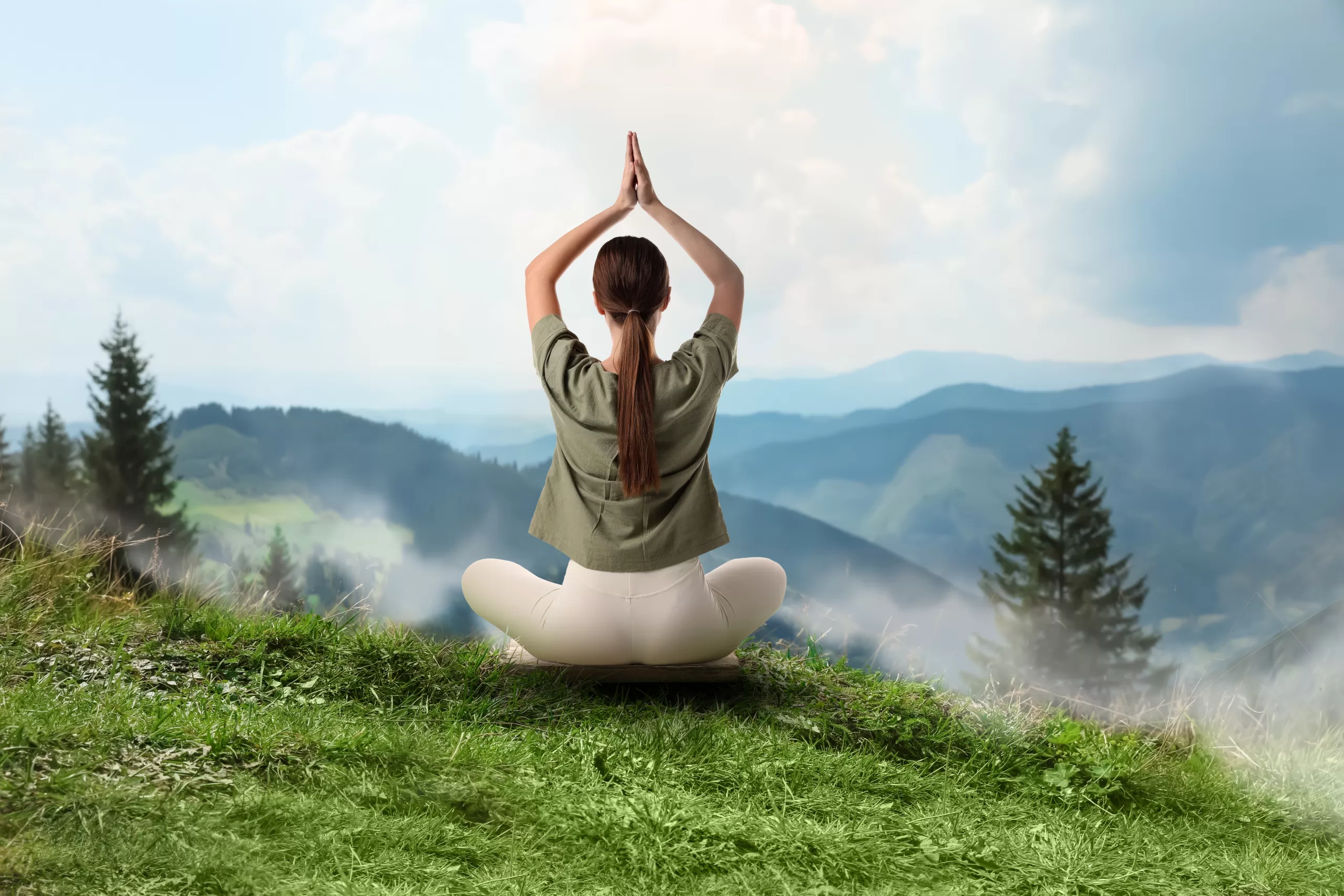 When stressed, the body releases cortisol as part of its ‘fight or flight’ response. This hormone acts as a natural alarm system which prepares us to either confront or flee from a threat.
When stressed, the body releases cortisol as part of its ‘fight or flight’ response. This hormone acts as a natural alarm system which prepares us to either confront or flee from a threat.